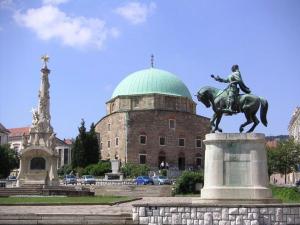| Author: | Jetta S. Wolff | ISBN: | 9781465581662 |
| Publisher: | Library of Alexandria | Publication: | March 8, 2015 |
| Imprint: | Language: | English |
| Author: | Jetta S. Wolff |
| ISBN: | 9781465581662 |
| Publisher: | Library of Alexandria |
| Publication: | March 8, 2015 |
| Imprint: | |
| Language: | English |
THE Louvre has existed on the selfsame site from the earliest days of the history of Paris and of France. It began as a rough hunting-lodge, erected in the time of the rois fainéants—the “do-nothing” kings: a primitive hut-like construction in the dark wolf-haunted forest to the north of the settlement on the islets of the Seine, called Leutekia, the city of mud, on account of its marshy situation, or Loutouchezi, the watery city, by its Gallic settlers, by the Romans Lutetia Parisiorum—the Paris of that long-gone age. The name Louvre, therefore, may possibly be derived from the Latin Word lupus, a wolf. More probably its origin is the old word leouare, whence lower, louvre: a habitation.
THE Louvre has existed on the selfsame site from the earliest days of the history of Paris and of France. It began as a rough hunting-lodge, erected in the time of the rois fainéants—the “do-nothing” kings: a primitive hut-like construction in the dark wolf-haunted forest to the north of the settlement on the islets of the Seine, called Leutekia, the city of mud, on account of its marshy situation, or Loutouchezi, the watery city, by its Gallic settlers, by the Romans Lutetia Parisiorum—the Paris of that long-gone age. The name Louvre, therefore, may possibly be derived from the Latin Word lupus, a wolf. More probably its origin is the old word leouare, whence lower, louvre: a habitation.















